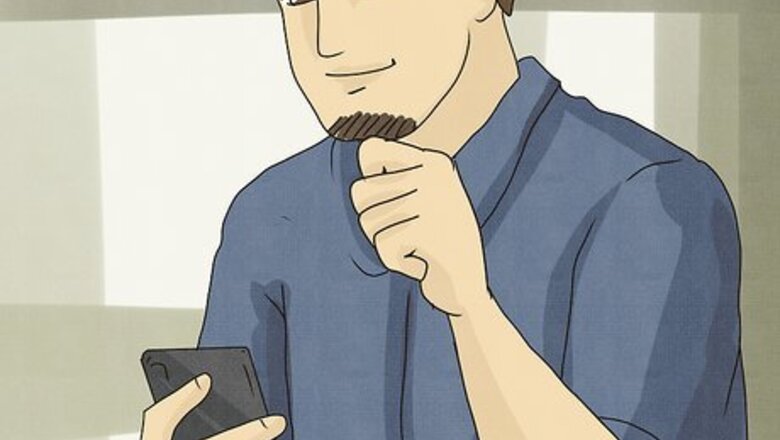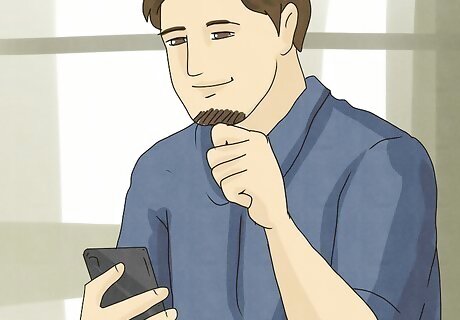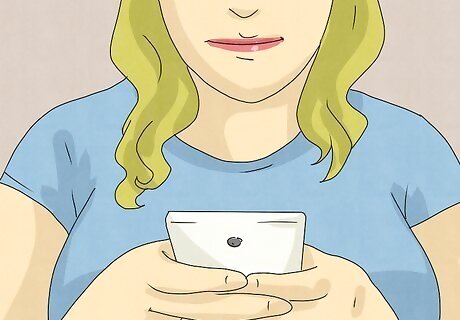
views
What is a clapback?

A clapback is a sassy, witty response to an insult. Clapbacks are comebacks that are particularly quick and clever, and they often shut down the conversation or otherwise challenge the original criticism. Clapbacks are commonly used on social media where you can boldly respond to negative comments, but they can also be used to end conversations in real life, as well. Clapbacks often use humor to turn the tables on the original commenter.
Clapback Origins
The term may come from the song “Clap Back” by Ja Rule. While the origins of the term “clapback” are not entirely certain, many attribute its rise in popular slang to Ja Rule’s 2003 song “Clap Back,” which was a diss track toward 50 Cent and Eminem. In the hook, Ja Rule says “Clap back, we gon’ clap back” referring to what he will do to rappers who disrespect him. In the song, Ja Rule also says “Clap that boy like Birdman and Clipse,” referring to Birdman’s 2000 song “What Happened to the Boy?” In this instance, “clapping” means to shoot someone, referring to the sound of a handgun shot, so a clapback would be like return fire.
“Clapback” has roots in African American Vernacular English. African American Vernacular English (or AAVE) is a vernacular of English spoken by many Black Americans and Canadians, particularly by working- and middle-class urban communities. Like many popular slang terms, “clapback” was mostly used in Black communities and in Hip Hop culture before spreading to other communities online.
How to Clap Back

Respond to a troll on social media. One of the most common ways clapbacks are used is on social media. Internet trolls love to try to get a rise out of people, so shut them down with a casual clapback. Focus on outsmarting them rather than insulting them to get the best results. If someone is complaining about your social media content, say something like “You don’t like what I post? You follow me, dude. That’s on you.” Or, if the troll has a typo, like “your the worst,” simply respond with “*You’re” and move on.
Roast a judgmental family member. Many people dread holidays and family get-togethers because of that one annoying relative. If you have a family member who always has something passive-aggressive (or just downright aggressive) to say, turn the tables and roast them first. You’re sure to be the family hero. Here are some examples: “My sister said she didn’t like my shirt, so I said I didn’t like her personality.” “My aunt commented on how I was on my third plate of food, so I commented on how she was on her third husband.”
Shut down microaggressions. Sometimes, clapbacks can be used for more than just funny comebacks. Many people of color, women, and members of the LGBTQ+ community have begun using clapbacks to call out microaggressions and casual racism, sexism, and/or homophobia. Use a clapback to let others know you won’t stand for this kind of treatment. These clapbacks aren’t necessarily the same as others, as they’re also meant to educate. If someone says something disrespectful to you, directly tell them why it’s wrong and why they shouldn’t do it. For example, if you’re a woman and the men at your job make you feel belittled because of your gender, tell them you’re capable of doing whatever they can and it’s insulting that they think otherwise. Or, if you’re Black and white people keep trying to touch your hair without your permission, shut them down and tell them that it’s inappropriate.
Let a hater know everything good about your life. A great clapback doesn’t always have to be a direct insult or roast. Sometimes, the best way to handle a hater is to show them how happy you are. Letting them know that their negative comments don’t bother you will likely just make them more annoyed. Here are some examples: “What was that? You don’t like me? I’m sorry, I can’t hear you. I’m too busy relaxing on the beach in the Bahamas.” “You’re insulting people online. I’m sitting here with my dream job, my dream house, and my dream partner. I think we all know who the winner is.”
How to Use Clapback in a Sentence

Talk about your favorite celebrity roasts. These days, the funniest and most iconic clapbacks often come from celebrities and brands on social media sites. The anonymity of social media attracts a lot of trolls and haters who love to leave negative comments, and celebrities are quick to retort. Use the examples below to tell everyone about your favorite social media clapbacks: “Chrissy Teigen is the queen of clapbacks. She’s always calling out trolls and critics online.” “I will never delete Twitter because I love watching all the fast food restaurants clap back at each other.”
Express your love for clapback memes. If you’ve been on the internet at all for the last decade or so, you might’ve seen memes with different roasts and clapbacks. While these situations might’ve been fictional, they still offer inspiration for clapbacks you can say in the moment. Here are some examples of how to bring them up in conversation: “Have you seen the Thanksgiving clapback memes? They’re giving me so many good ideas on how to respond to my relatives.” “I love looking at memes about subtle, backhanded compliments. I think those are the best clapbacks.” You can also repost your favorite clapback memes with the clapping emoji to indicate that you think it’s a good clapback.
Tell everyone about the iconic comeback you heard. Sometimes, you hear a roast that’s so good you wish you’d come up with it yourself. Tell the story to those who weren’t there to witness it in person so they can all understand what a great clap back it was. Here are some examples of what you might say: “I still remember the clapback one of my shy classmates gave to the mean girl. It was iconic.” “My manager finally clapped back at the customer who’s always harassing us yesterday. I have to tell you about it.”
How to Craft a Witty Clapback

Respond quickly. Whether you’re clapping back to a comment online or something someone said in person, show everyone how witty you are by replying as quickly as possible. Your clapback won’t be as effective if you respond days or hours (or even minutes, if it’s in person) later.
Tailor your clapback to the person you’re dealing with. The more personal your clapback, the more effectively it will shut down the other person. Know who they are and what insult or comeback is most likely to end the conversation. This is easier if you know them in person and are already aware of how you can roast them. If you’re responding to someone you don’t know online, skim through their profile if you can to see if you can find something to roast them. If not, focus your clapback on all the positive things in your life to show that they can’t get you down.
Focus on using your wit. While you might be angry and want to go on the attack, your goal isn’t to hurt their feelings or burn any bridges. Instead, focus on outsmarting them with wit and humor. This makes it more difficult for them to come up with another comeback.
Exude cool confidence. Try not to get too worked up or overheated about what the person said. If you get angry or start yelling, it will only reflect poorly on you and won’t make others take you seriously. If you feel yourself getting upset, take a deep breath and remember that the situation isn’t that serious. If you respond calmly and with confidence, you’ll have a better clapback.
Pick your battles. You don’t have to respond to everyone who trolls or insults you. If you do, people will see that it bothers you, which will only make them want to come after you even more. Save your clapbacks for when the situation truly calls for them to make your words count.

Make it memorable. To have a truly great clapback, it needs to be something that people will remember for years to come. Think of your favorite celebrity or social media clapbacks and what made them so good. Your clapback should be sharp and snappy enough that others could quote it.



















Comments
0 comment